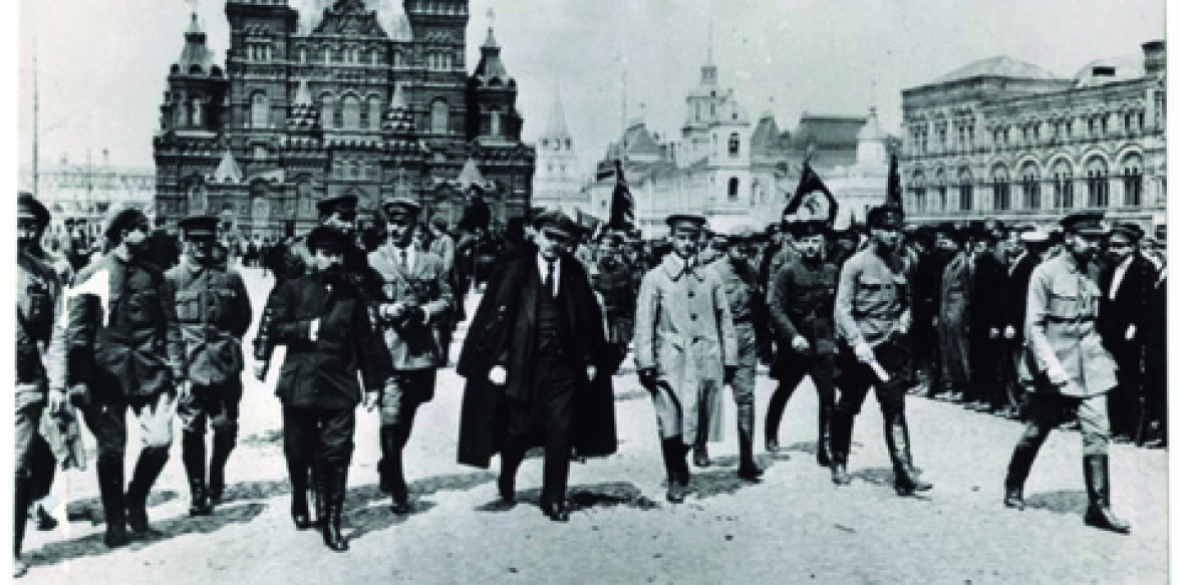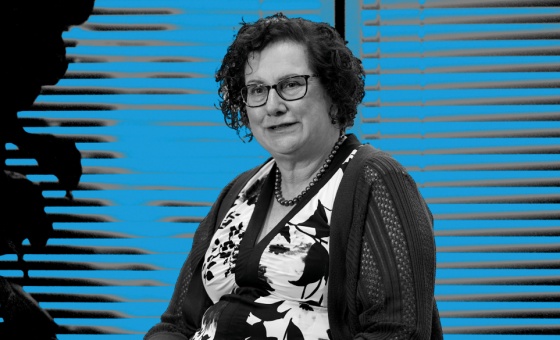This is the last article you can read this month
You can read more article this month
You can read more articles this month
Sorry your limit is up for this month
Reset on:
Please help support the Morning Star by subscribing here
LENIN is commonly perceived solely as a revolutionary activist who applied Marxist theory to the practice of revolution — a successful one! However this is not the whole story. Lenin was an important theoretician who developed Marxist theory in three important and linked areas.
First, Lenin’s theoretical construction of the October Revolution itself. The two revolutions in 1917 were planned and executed through the combination of theory and practice. As George Lukacs put it, the October Revolution was the point at which “theory bursts into praxis.” This was not a spontaneous “uprising,” it was carefully planned in accordance with Marxist theory applied concretely to Russian reality.
Second, Lenin’s theory of imperialism. Lenin himself gave the briefest possible definition of imperialism as the monopoly stage of capitalism. “Imperialism is capitalism at that stage of development at which the dominance of monopolies and finance capital is established; in which the export of capital has acquired pronounced importance; in which the division of the world among the international trusts has begun, in which the division of all territories of the globe among the biggest capitalist powers has been completed.”
This analysis had important repercussions within European labour movements. It helped to explain the left/right split in the movement prior to 1914 — a split which was solidified into open rupture as a result of World War I. In Russia opposition to WWI was particularly important in building the worker-peasant alliance, since the peasantry formed the bulk of the hapless conscripted Russian army.
As the debates within the Second International showed, those who rejected or failed to understand Lenin’s analysis of imperialism supported the war and all that led up to it. As a result right-wing labourites failed to support the Bolshevik Revolution. The split within social democracy was complete when the Third International was formed in 1919. The Russian Revolution effectively defined the division as that between communists and social democrats.
Third, Lenin’s analysis of the agrarian question and the role of the peasantry. The Bolshevik revolution itself could not have succeeded without this analysis which in itself amounted to a major theoretical contribution to Marxism. The concrete application of this analysis was a key factor explaining the October Revolution.
Until 1917 Marxists had always understood that a socialist revolution was expected to occur in the most advanced capitalist country because industrialisation had resulted in the massive expansion of the working class — the class which would play the leading role in the fight for socialism. But in Russia the working class was the minority class, 80 per cent of the population were peasants. Arising from this commonly accepted Marxist view, Russian exceptionalism is usually explained by asserting that the Bolshevik Revolution happened because Russia was “the weakest link in the imperialist chain.” However this explanation, while true, is inadequate, largely because it fails to understand both the “peasant question” and correspondingly the importance of the Bolshevik Party.
These two points are linked because the forging of a worker-peasant alliance by the Bolsheviks was not only central to the success of the revolution, but it also signified an important new advance within historical materialism. To quote the Indian Marxist Prabhat Patnaik, it marked “a new theoretical departure within Marxism” and therefore the October Revolution was and is inspirational for the revolutionary struggles in the countries of the colonised and neocolonial world. It was an original development of Marxist theory because hitherto the peasantry had been written off as a reactionary force, often using the example of the French peasantry; citing as evidence their negative role in the 1848 revolution and the 1871 Paris Commune.
Lenin analysed the Russian peasantry in a different way. The emancipation of the Russian serfs in 1861 meant that the peasantry was a comparatively new and very numerous social force. Lenin studied this in two important books — The Agrarian Question in Russia (1908) and The Development of Capitalism in Russia (1899). In summary, he rejected the view of peasantry as single homogeneous group and instead distinguished within them three economic groups. The richest peasants, the kulaks, accounted for around 12 per cent of the rural population. Next came the middle peasants at 7 per cent (a steadily diminishing group). Finally, the largest group, ever-increasing numerically, the poor peasants, accounting for 81 per cent of the rural population. They farmed very small plots which yielded insufficient to sustain them and, as a result, they were dependent on wage labour. In sharp contrast to the peasantry as a whole, the big landowners, 0.002 per cent of the rural population, owned 27 per cent of land.
Lenin also noted that capitalism was growing in the Russian countryside, and that capitalist relations in agriculture steadily undermined the commune (the “mir”). This was evidenced by the Stolypin (Russian prime minister 1906-11) “reforms” to stem the tide of discontent following the 1905 revolution. However, the reforms backfired. The government attempt to destabilise the commune in order to promote agrarian capitalism increased peasant poverty, thereby stimulating greater disaffection. The effect of Stolypin’s reforms cemented the symbiotic alliance of the big landowners and capitalists.
Lenin described this as the “Prussian path” in agriculture. By this he meant capital in alliance with landowners (Junker landowners and the industrial bourgeoisie in the Prussian case). This marginally benefited the kulaks and middle peasants, but increased the woes of the largest group — the poor peasants. Instead of relieving the situation in the countryside this added a new dimension to peasant tensions. Poor peasants (the overwhelming majority) maintained a desire to see the redistribution of noble estates, regarding this as the only real solution to the problem of land hunger.
Hence Lenin’s new revolutionary strategy was initiated — a “revolutionary-democratic dictatorship of the proletariat and the peasantry.” This was not a mere slogan — it was based on a Marxist analysis of Russian political economy in which capitalist relations of production, in both heavy industry (with massive amounts of British and French investment) and in agriculture, were now dominant.
Lenin’s analysis was of critical importance because it recognised that the revolution in Russia would not follow a similar path to other European countries. Capitalism had arrived late in Russia and consequently the bourgeoisie had lost its potential to inspire a bourgeois insurgency as in Britain and France. The Russian bourgeoisie was dependent on maintaining a firm alliance with the landowning ruling class, an alliance which withstood the first revolution of 1917, but was crushed by the Bolshevik Revolution eight months later.
When Lenin returned to Russia in April 1917 he published an important document, known as the April Theses. This set out the Bolshevik policy to transform the current Russian bourgeois/landowner republic — the product of the February 1917 revolution — into a socialist state. In effect, it turned into the demands around which revolutionary workers, soldiers and peasants rallied.
It identified the February revolution as a transitional stage (termed “dual power”) to a full socialist revolution, after which landed estates and banks would be confiscated and nationalised and production and distribution would be under the control of workers’ soviets. Soviets (councils) of workers, soldiers and peasants sprung up throughout Russia in which Bolsheviks played the leading role. By October the “dual power” was defeated bloodlessly. The socialist revolution was triumphant.
As we mark the centenary of Lenin’s death we can confidently state that the use of the term Marxism-Leninism, far from being a dogmatic formulation, is an accurate representation of Lenin’s contribution to Marxist theory and practice. Its result was the creation of the first socialist state based on the active support of the majority of the population — workers and peasants. The Bolsheviks were, in word and deed, a revolutionary vanguard party guided by the most advanced theory — Marxism-Leninism.









